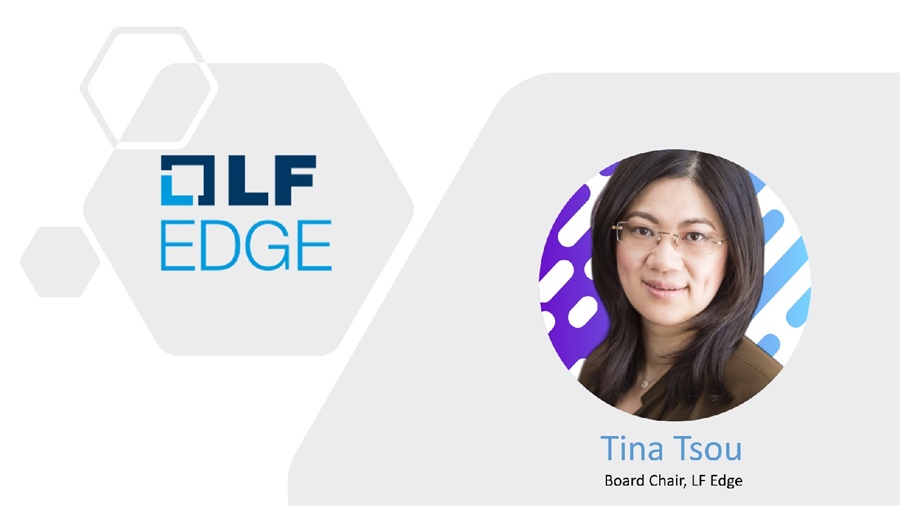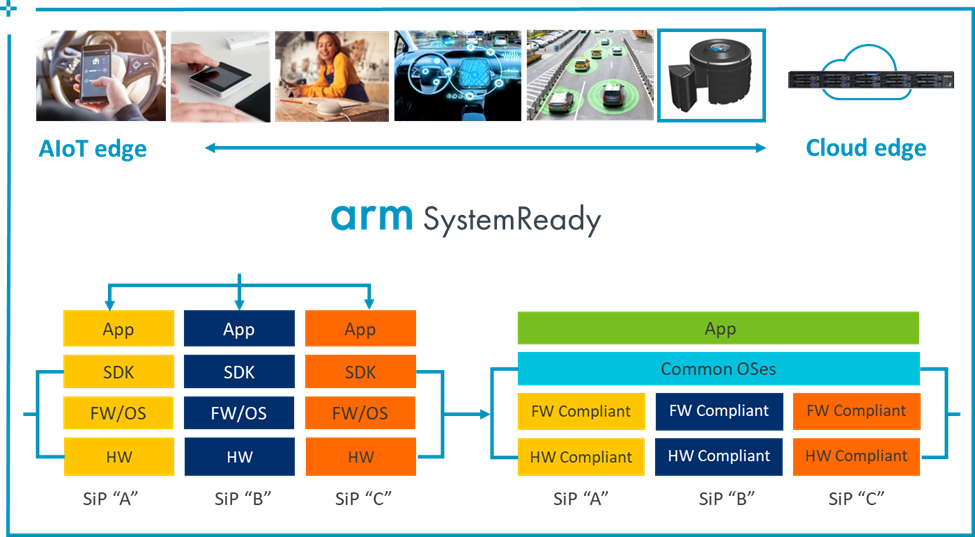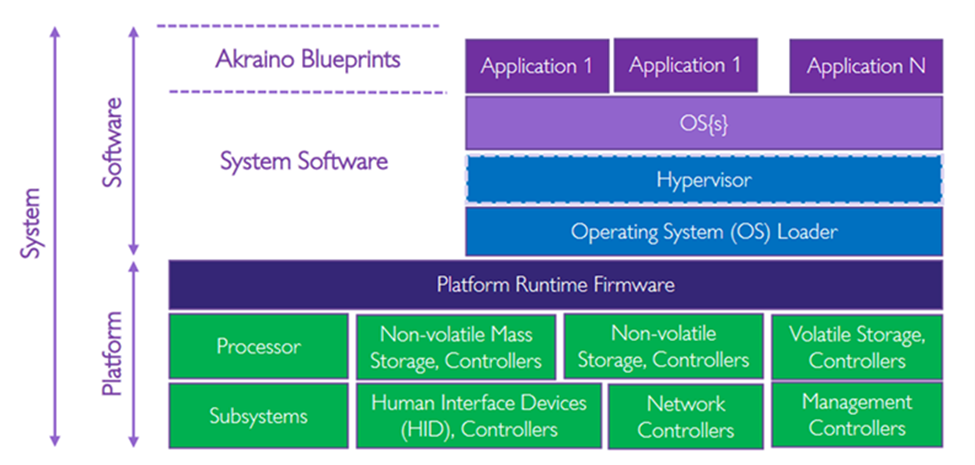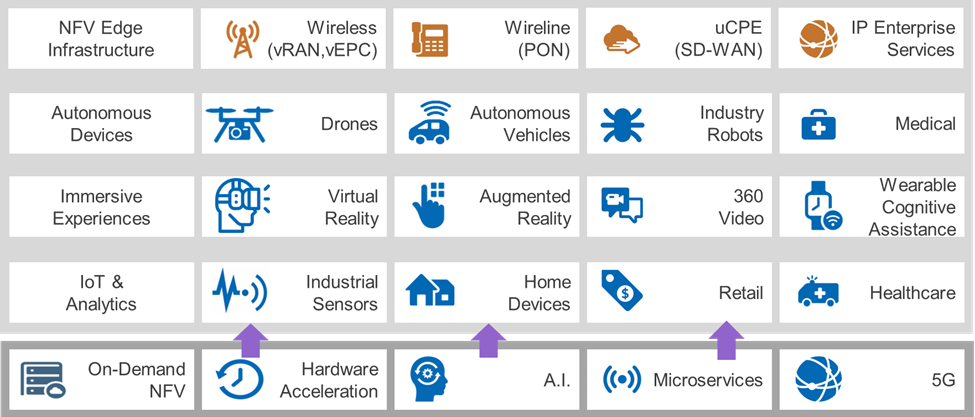

Bringing the edge to work with LF Edge - Infrastructure Solutions blog - Arm Com...
source link: https://community.arm.com/arm-community-blogs/b/infrastructure-solutions-blog/posts/lf-edge
Go to the source link to view the article. You can view the picture content, updated content and better typesetting reading experience. If the link is broken, please click the button below to view the snapshot at that time.

LF Edge: Bringing the edge to work

One of the biggest beneficiaries of edge technology will be large commercial and industrial conglomerates. 33% of energy gets consumed by industry and some estimate that up to 20% of it could be reduced with AI. Moreover, preventable downtime can cost $30,000 an hour at some locations.
Industrial customers, however, are often fearful about the unintended consequences when it comes to adding new technology to existing processes. LF Edge, part of the Linux Foundation, seeks to smooth away the speed bumps. Arm’s Tina Tsou, now the Board Chair, LF Edge, talks about the mission and opportunity for standardizing the edge.
What is LF Edge about and what are its goals?
LF Edge is an umbrella organization that aims to establish an open, interoperable framework for edge computing independent of hardware, silicon, cloud, or operating system. By bringing together industry leaders, LF Edge will create a common framework for hardware and software standards and best practices critical to sustaining current and future generations of IoT and edge devices.
What are some of the projects that it has underway?
LF Edge projects have an associated maturity level, as voted per the approved Project Lifecycle Document (PLD) process. The maturity level is a signal as to where the project is in its lifecycle, dependent upon number of commits, use in POCs, community participation, interoperability/compatibility with other LF Edge projects, publicly documented release cycles, and more.
Stage 1: At Large
At Large projects are projects which the Technology Advisory Council (TAC) believes are, or have the potential to be, important to the ecosystem. They may be early-stage projects just getting started, or they may be long-established projects with minimal resource needs.
Project Alvarium, which has initial code seeded by Dell Technologies, is aimed at building a framework and software development kits (SDK) for trust fabrics that deliver data from devices to applications with measurable confidence. Trust fabrics take a system-level approach by layering trust insertion technologies spanning silicon to cloud with the goal of creating new business models and customer experiences. Initial contributing companies include Dell, the IOTA Foundation, Intel, Arm, VMware and ZEDEDA.
Baetyl, meanwhile, seamlessly extends cloud computing, data and services to edge devices, enabling developers to build light, secure and scalable edge applications. Baetyl (pronounced “Beetle”) offers a general-purpose platform for edge computing that manipulates different types of hardware facilities and device capabilities into a standardized container runtime environment and API, enabling efficient management of application, service, and data flow through a remote console both on cloud and on prem. Baetyl also equips the edge operating system with the appropriate toolchain support, reduces the difficulty of developing edge calculations with a set of built-in services and APIs, and provides a graphical IDE in the future.
eKuiper is a lightweight edge client implemented by Goland to run cloud IoT data analytics / streaming software such as Apache Spark, Apache Storm, and Apache Flink on resource-constrained edge devices. eKuiper references these cloud streaming frameworks, considers any unique requirements of edge analytics, and introduces a rule engine, which is based on Source, SQL (business logic) and Sink; rule engine is used for developing streaming applications at the edge.
Secure Device Onboard provides easier, faster, less expensive, and secure onboarding of devices. Most “Zero touch” automated onboarding solutions require the target platform to be decided at manufacturer.
Stage 2: Growth Stage
The Growth Stage is for projects that are interested in reaching the Impact Stage, and have identified a growth plan for doing so. Growth Stage projects will receive mentorship from the TAC and are expected to actively develop their community of contributors, governance, project documentation, and other variables identified in the growth plan.
Project EVE is building EVE-OS, a universal, open Linux-based operating system for distributed edge computing. EVE-OS aims to do for the distributed edge what Android did for mobile by creating an open foundation that simplifies development, orchestration and security of edge computing nodes deployed on-prem and in the field. Supporting Docker containers, Kubernetes clusters and virtual machines, EVE-OS provides a flexible foundation for distributed edge deployments with choice of any hardware, application and cloud.
Fledge developers build smarter, better, more cost-effective industrial manufacturing solutions to accelerate Industrial 4.0. Fledge is focused on critical operations, predictive maintenance, situational awareness, and safety. Fledge is architected to integrate Industrial Internet of Things (IIoT), sensors, and newer industrial systems with the cloud and existing “brownfield” systems like historians, DCS (Distributed Control Systems), PLC (Program Logic Controllers) and SCADA (Supervisory Control and Data Acquisition). All sharing a common set of administration and application APIs.
HomeEdge is a robust, reliable and intelligent home edge computing open source framework and ecosystem running on a variety of devices at home. The Home Edge Project provides users with an interoperable, flexible, and scalable edge computing services platform with a set of APIs that can also run with libraries and runtimes.
Open Horizon is a platform for managing the service software lifecycle of containerized workloads and related machine learning assets.
State of the Edge is a vendor-neutral platform for open research on edge computing that is dedicated to accelerating innovation by crowdsourcing a shared vocabulary for edge. The project develops free, shareable research for edge computing and the next generation Internet.
Stage 3: Impact Stage
The Impact Stage is for projects that have reached their growth goals and are now on a self-sustaining cycle of development, maintenance, and long-term support. Impact Stage projects are widely used in production environments and have large, well-established project communities with a number of contributors from at least two organizations.
Akraino is a set of open infrastructures and application blueprints suitable for providers or enterprise edge domains. Akraino spans a broad variety of use cases, including 5G, AI, edge IaaS/PaaS, and IoT. These Blueprints have been created by the Akraino community and focus exclusively on the edge in all of its different forms. What unites all of these blueprints is that they have been tested by the community and are ready for adoption as-is, or used as a starting point for customizing a new edge blueprint.
EdgeXFoundry The open, vendor-neutral platform speeds developer and technology providers time to market by providing modular reference services for device-data ingestion, normalization, analysis and sharing in support of new IoT data services, advanced edge computing applications, including AI and automation.
Why did Arm join and what sort of technology or expertise do you think we might contribute?
Arm processors will be pervasive at the edge. We are already seeing them running 5G base stations, edge data centers, IoT gateways and other edge devices. The expanding number of software and hardware developers, along with the growing use cases, however, means that compatibility will be a must. We need standards and accepted conventions from organizations like LF Edge.
We are also helping these efforts through initiatives like Project Cassini, SystemReady and PSA Certified. PSA Certified effectively gives OEMs and developers a pathway to show their customers and partners that their products meet certain levels of security hardness. SystemReady serves as a blueprint for building Arm-based devices and both of these roll up into Project Cassini, which gives cloud-based software developers a more predictable hardware ecosystem so they can develop their own products. We anticipate the growth of the edge will be rapid; coming to terms on parameters for development will eliminate the friction that can slow it down.

What are some of the projects that you think Arm might join or try to launch?
We mostly want to establish a platform that hardware and software developers can use to build their own products. The key is pulling in all of the technology necessary for a secure boot-up but leaving enough room for people to differentiate and add value. Project Cassini does this by combining hardware reference platforms from SystemReady, a security certification framework through PSA Certified and technical guidance for taking advantage of these attributes via cloud native software. Ideally, by adopting Project Cassini, hardware makers can make it easier for software developers to write to their systems, and customers to adopt the entire stack. The goals include:
- Maintaining the integrity of the platform layer and provide a safe execution environment for the LF Edge projects and blueprints.
- Defining secure boot environments based on the platform HW Root-of-Trust.
- Providing protection of key platform assets.
- Providing a foundation for attesting the platform’s state of security.
- Providing requirements for securely updating the platform firmware.

And finally, what makes the edge different as a computing platform than the cloud or an endpoint? What are the characteristics that make edge so challenging and what will be needed to overcome these challenges?
First, the physical dimensions of the edge will be different from any computing platform before it. Data Centers historically have been centralized and actively managed by employees. Desktops and laptops are examples of distributed computing systems, but the degree of physical control is still very real. Individuals are using them. Edge systems will be out in the wild–attached to wind turbines or inside a sealed box in an urban corridor. There will be a premium on robustness and reliability.

Second, edge systems will also place a high premium on low latency. Health care organizations will use edge devices to monitor remote patients in real-time. We will see edge systems running diagnostics of airplanes in flight. Low latency will enhance the value of these systems. But, again, unless we get the foundation set correctly, the adoption curve will be challenging.
Recommend
About Joyk
Aggregate valuable and interesting links.
Joyk means Joy of geeK